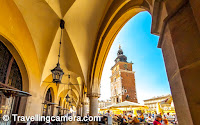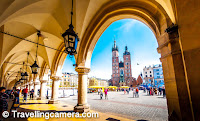In the heart of Gdańsk, Poland, a solemn and powerful monument stands as a testament to courage, sacrifice, and the unwavering spirit of those who fought for workers' rights and freedom. The Monument to the Fallen Shipyard Workers of 1970, often simply referred to as the "Monument to the Fallen," is a poignant and iconic symbol of a tumultuous period in Poland's history. Join us as we explore the profound significance and moving story behind this remarkable monument.
A Dark Chapter in Polish History
The 1970s were a challenging time in Poland, marked by economic hardships and political turmoil. Workers in the shipyards of Gdańsk and other cities faced difficult working conditions and low wages. Frustration and discontent simmered, eventually erupting into widespread protests and strikes in December 1970.
The Tragic Events
The protests in Gdańsk escalated, leading to a tragic confrontation between striking workers and government forces. The clashes resulted in the deaths of several shipyard workers, who came to be known as the "Fallen Shipyard Workers."
A Monument to Remember
In the aftermath of these tragic events, a decision was made to create a memorial to honor the fallen workers and all those who suffered during the protests. The Monument to the Fallen Shipyard Workers of 1970 was unveiled in 1980, a decade after the tragic events.
Design and Symbolism
The monument, designed by renowned sculptor Władysław Hasior, is a somber and moving work of art. Its central element is a towering, 25-meter tall, three-cross structure that symbolizes both the suffering of the workers and the Christian values of hope and redemption. At its base, there are bronze statues of workers in various poses, representing the resilience and unity of the working class.
The Eternal Flame
One of the most striking features of the monument is the "Eternal Flame," which burns continuously in memory of the fallen workers. It's a powerful symbol of remembrance and a source of inspiration for future generations to stand up for justice and freedom.
A Place of Reflection
The Monument to the Fallen has become a place of pilgrimage for both locals and visitors. It serves as a reminder of the sacrifices made in the struggle for workers' rights and the greater cause of freedom. Visitors come here to reflect, pay their respects, and connect with the profound history of solidarity and resilience that defines Poland.
Legacy and Inspiration
The events of 1970, the creation of this monument, and the subsequent Solidarity movement played a pivotal role in Poland's history. They ultimately contributed to the fall of communism in Eastern Europe. The Monument to the Fallen stands as a symbol of the enduring human spirit and the power of unity in the face of oppression.
The Monument to the Fallen Shipyard Workers of 1970 in Gdańsk is not just a sculpture; it's a living testament to the courage and sacrifice of those who dared to stand up for their rights and freedom. It's a place where history, memory, and inspiration converge, inviting all who visit to reflect on the values of solidarity and resilience that continue to shape our world today. It's a reminder that even in the darkest of times, the flame of hope and justice can burn brightly.
Related Blogposts -

























.jpg)
Comments